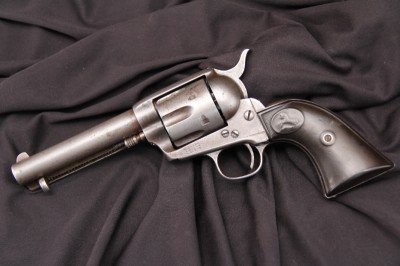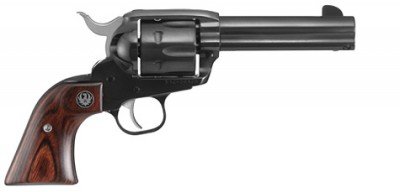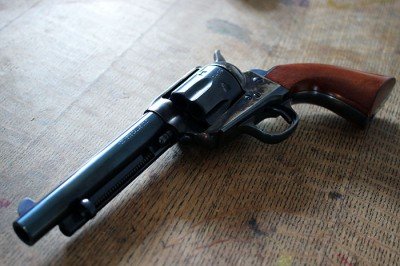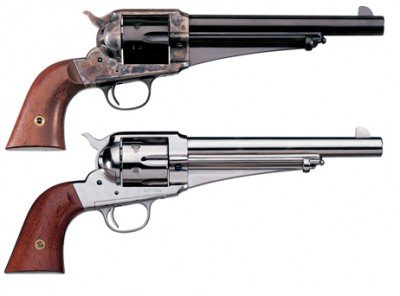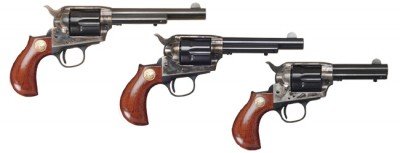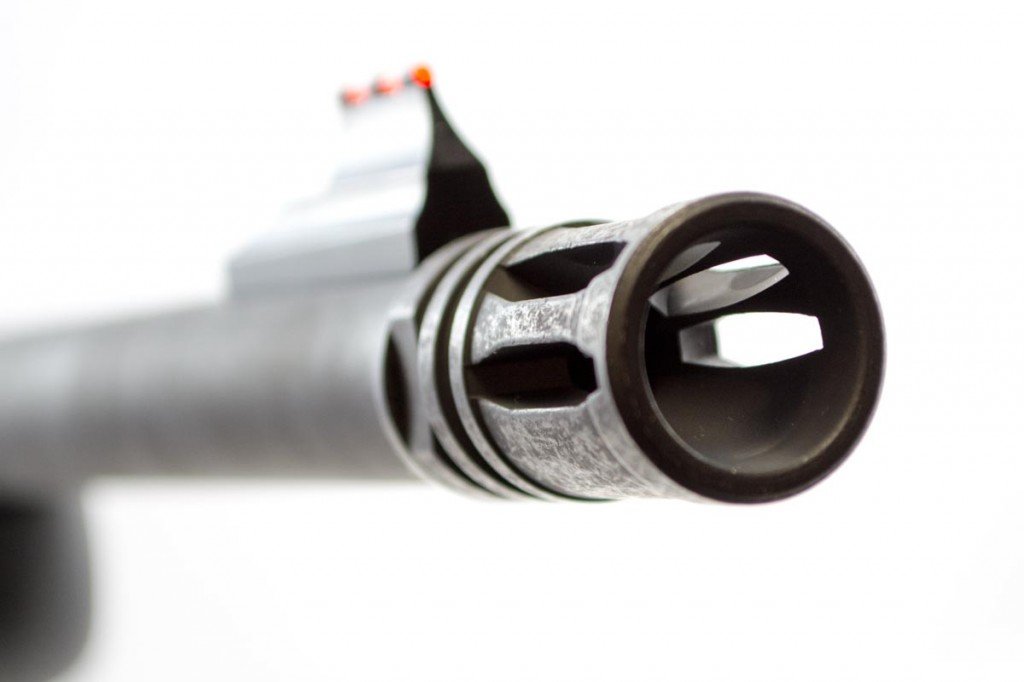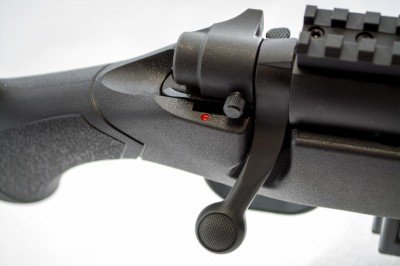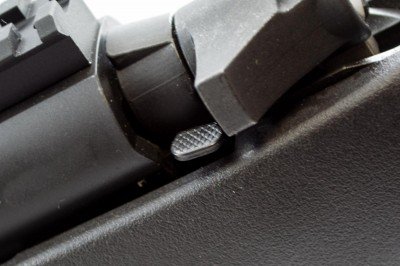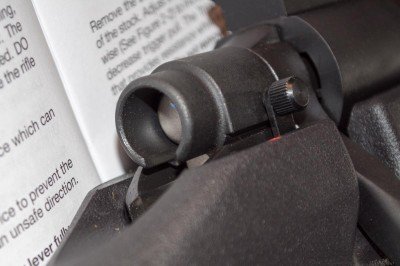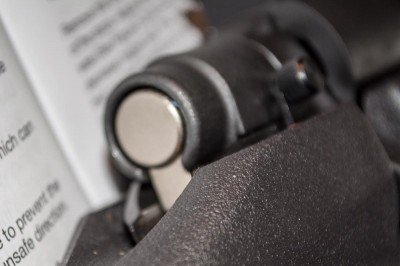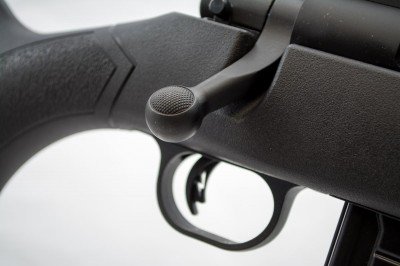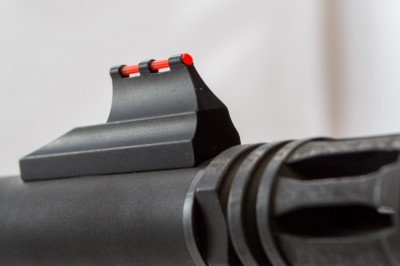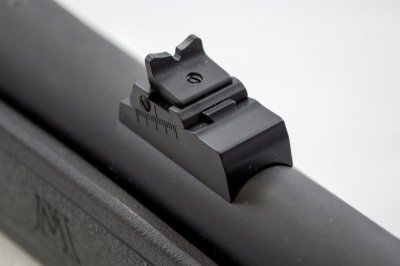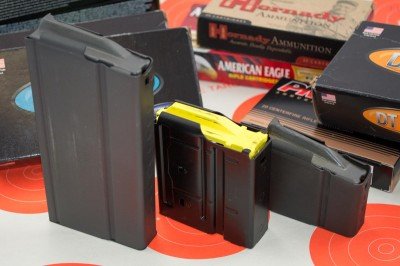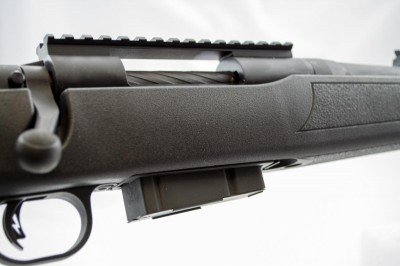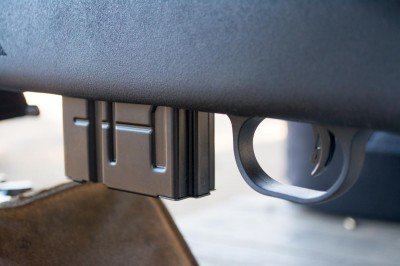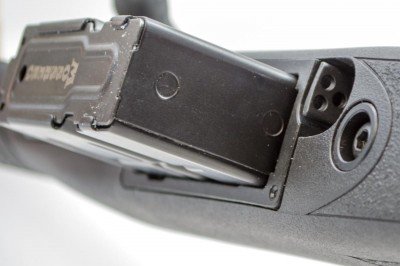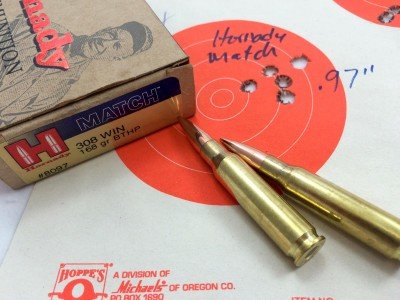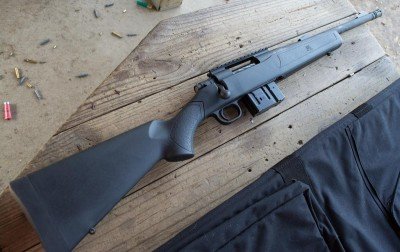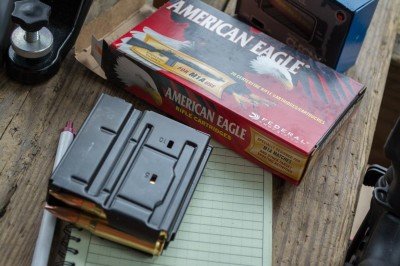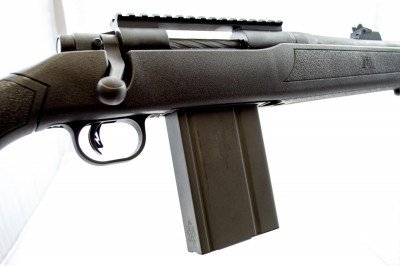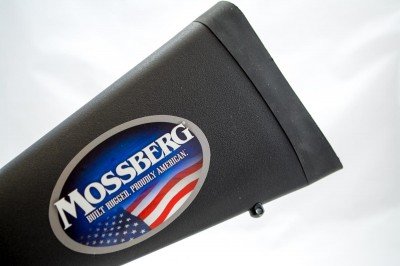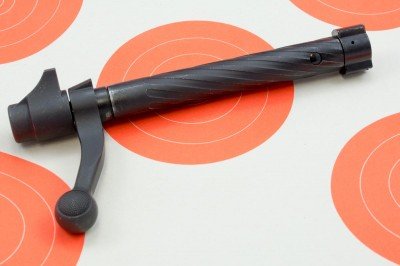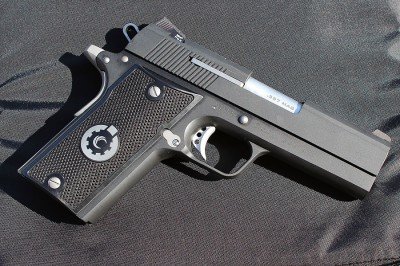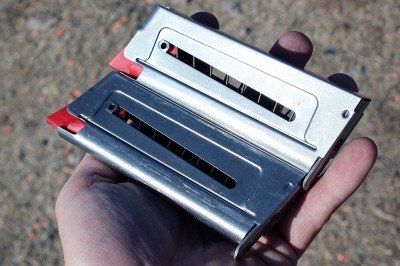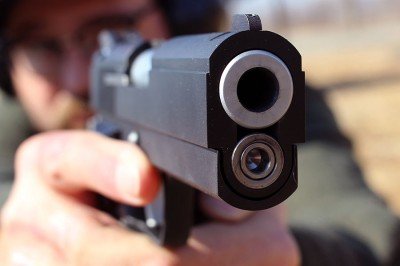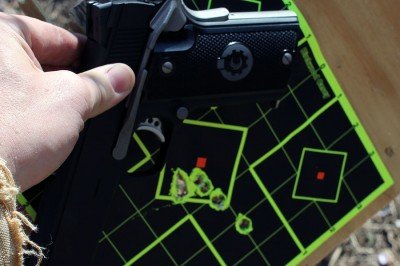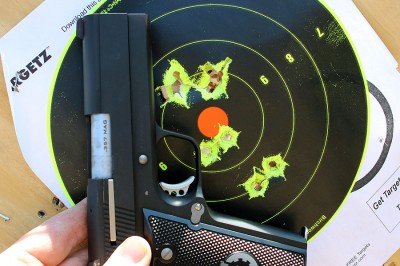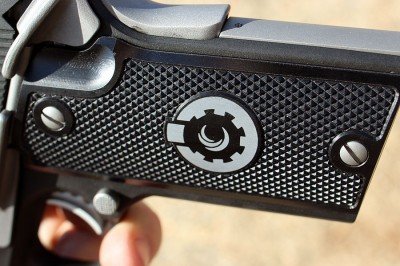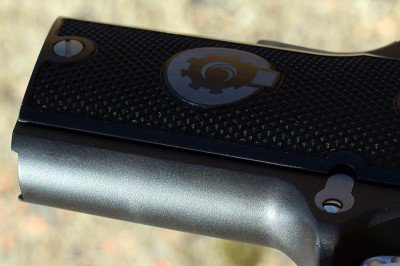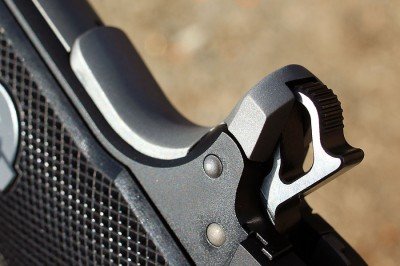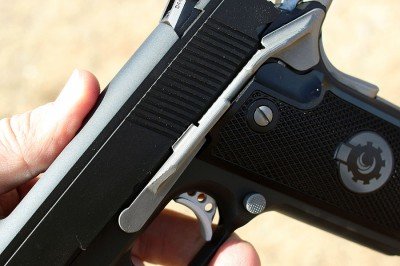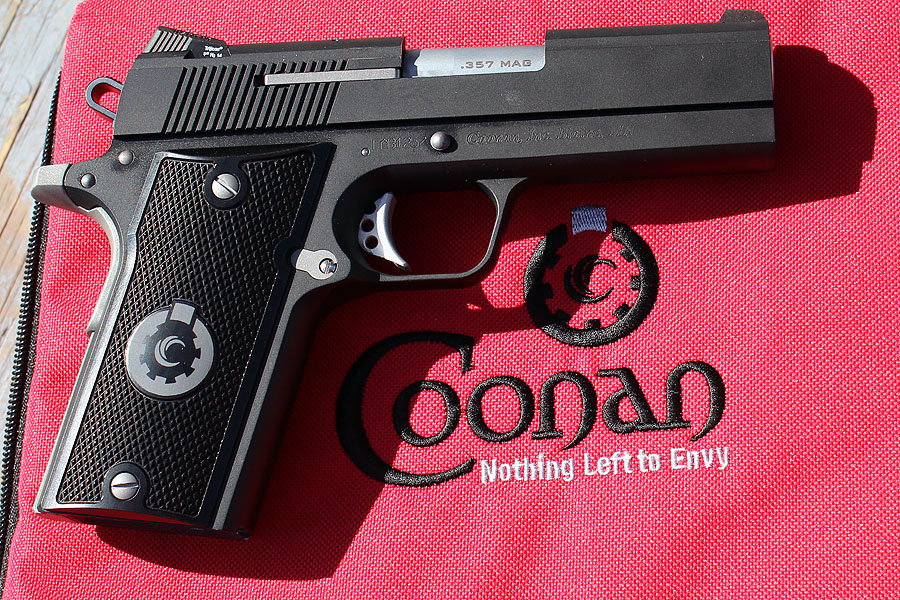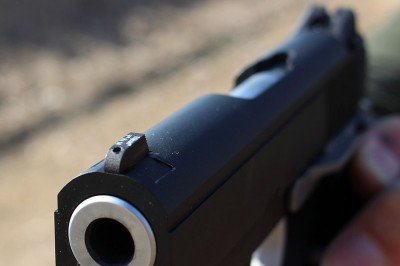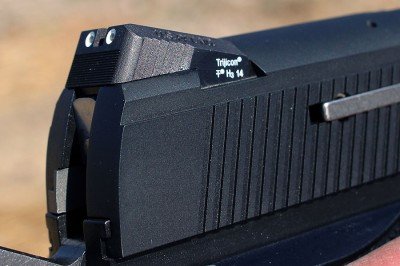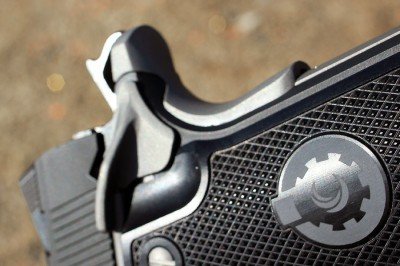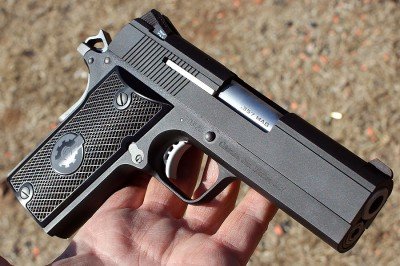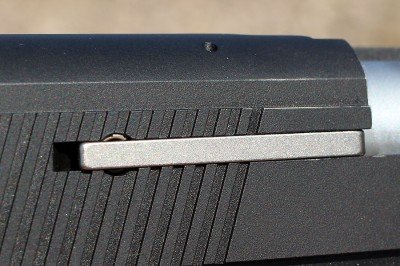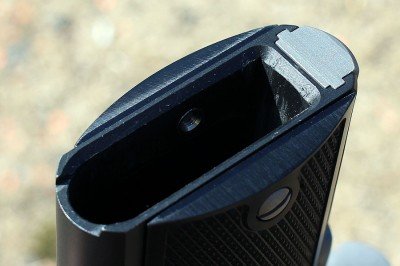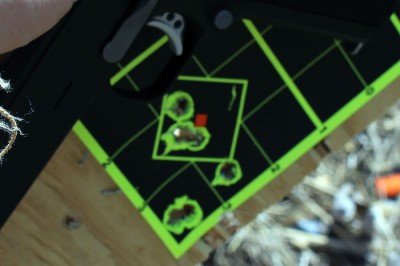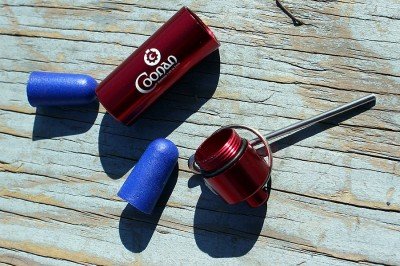The Disaster Preparedness Handbook Title Code DPH Your Price: $16.95 Availability: In Stock Quantity Email a friend Email a friend Description Ninety-nine percent of the time, the world spins like a top, the skies are clear, and your refrigerator is full of good food. But the world is a volatile place—storms rage, fires burn, and diseases spread. No one is ever completely safe. Humans live as part of a very complex ecosystem that is unpredictable and merciless. Could you protect your family in the case of an emergency—domestic or global? The Disaster Preparedness Handbook will help you to establish a practical disaster plan for your entire family (covering all fourteen basic human needs) in case the unpredictable happens. Additional information is also presented for those with special needs, including the elderly and disabled, children, pregnant women, and even pets. Well-researched by an army veteran and current NASA engineer, this is the essential guide every family should have, study, and keep handy, in case the unthinkable should occur. Paperback, 560 pages 202 color photographs and graphs 6" X 9" X 1" Related Items NRA Gunsmithing Guide NRA Gunsmithing Guide Your Price: $24.95 The U.S. Navy Seal Survival Handbook The U.S. Navy Seal Survival Handbook Your Price: $17.95 Why Not Load Your Own Why Not Load Your Own Your Price: $17.95 Browse Similar Items Shop by Type of Book > Best Sellers Shop by Type of Book > New Titles Shop by Type of Book > Paperbacks Shop by Subject > Self Defense Shop by Subject > Emergency Preparedness Copyright © 2014 Palladium Press, LLC. All Rights Reserved. | Privacy Policy | Return Policy | Shipping Policy stats
Tuesday, March 24, 2015
The Disaster Preparedness Handbook
The Disaster Preparedness Handbook Title Code DPH Your Price: $16.95 Availability: In Stock Quantity Email a friend Email a friend Description Ninety-nine percent of the time, the world spins like a top, the skies are clear, and your refrigerator is full of good food. But the world is a volatile place—storms rage, fires burn, and diseases spread. No one is ever completely safe. Humans live as part of a very complex ecosystem that is unpredictable and merciless. Could you protect your family in the case of an emergency—domestic or global? The Disaster Preparedness Handbook will help you to establish a practical disaster plan for your entire family (covering all fourteen basic human needs) in case the unpredictable happens. Additional information is also presented for those with special needs, including the elderly and disabled, children, pregnant women, and even pets. Well-researched by an army veteran and current NASA engineer, this is the essential guide every family should have, study, and keep handy, in case the unthinkable should occur. Paperback, 560 pages 202 color photographs and graphs 6" X 9" X 1" Related Items NRA Gunsmithing Guide NRA Gunsmithing Guide Your Price: $24.95 The U.S. Navy Seal Survival Handbook The U.S. Navy Seal Survival Handbook Your Price: $17.95 Why Not Load Your Own Why Not Load Your Own Your Price: $17.95 Browse Similar Items Shop by Type of Book > Best Sellers Shop by Type of Book > New Titles Shop by Type of Book > Paperbacks Shop by Subject > Self Defense Shop by Subject > Emergency Preparedness Copyright © 2014 Palladium Press, LLC. All Rights Reserved. | Privacy Policy | Return Policy | Shipping Policy stats
Top 5 Cowboy Action Revolvers
f you are a competitive shooter and have not checked out the SASS,
or cowboy action, matches you owe it to yourself to do so. Think of it
as 3 gun with revolvers, lever actions and double barreled shotguns. I
have shot a number of “friendly” cowboy matches and will attest to how
much fun can be had while testing your skills. All of the shooters in
this sport I have met have been friendly and more than willing to share
knowledge and tips to improve your shooting.
SASS stands for Single Action Shooting Society. You guessed it they shoot single action revolvers. But not just any single action revolver. These need to be like the old guns the gunslingers of the old west carried. Well, kind of. Like most things used in competitions these revolvers are usually tricked out. At the very least they have had a trigger and action job to slick them up. But there are a few things that are required to be legal. For example you can only have a Bisley style hammer on a revolver with a Bisley grip frame. If you want to read more about the rules they can be found here.
Anyways, here are 5 revolvers that that you can use for a Cowboy Action match right out of the box. They would all benefit from an action job and some other modifications that are approved.
Buy one now on Guns America: http://www.gunsamerica.com/Search.aspx?T=colt%201873
Buy one now on Guns America: http://www.gunsamerica.com/Search.aspx?T=ruger%20vaquero
Buy one now on Guns America: http://www.gunsamerica.com/Search.aspx?T=uberti%20cattleman
Buy one from Guns America: http://www.gunsamerica.com/Search.aspx?T=taylor%27s
Buy one from Guns America: http://www.gunsamerica.com/Search.aspx?T=cimarron%20lightning
So there you go. 5 single action revolvers that are SASS legal. If you are a Cowboy Action shooter, chime in with what you compete with. If you are not, go get be… oh OK, go ahead and comment too.
SASS stands for Single Action Shooting Society. You guessed it they shoot single action revolvers. But not just any single action revolver. These need to be like the old guns the gunslingers of the old west carried. Well, kind of. Like most things used in competitions these revolvers are usually tricked out. At the very least they have had a trigger and action job to slick them up. But there are a few things that are required to be legal. For example you can only have a Bisley style hammer on a revolver with a Bisley grip frame. If you want to read more about the rules they can be found here.
Anyways, here are 5 revolvers that that you can use for a Cowboy Action match right out of the box. They would all benefit from an action job and some other modifications that are approved.
Colt 1873 Single Action Army
Call me Captain Obvious, but I would be remiss if this list didn’t start with The Classic. There are some SASS shooters that use the originals. By originals I mean the ones made by Colt. Colt still makes them too. But are they original? There have been some changes made to the ’73 over the years and the current ones are referred to as being a 3rd generation. The 1st generation is considered the ones made from 1873 until 1940 when production all but ended due to WWII. One notable variant is the Bisley Model. It was intended to be a target shooting gun but quickly gained a well deserved reputation as a fast shooting revolver. The Bisley has a lowered and wider hammer, longer grip frame with a different angle and a wider trigger.Buy one now on Guns America: http://www.gunsamerica.com/Search.aspx?T=colt%201873
Ruger Vaquero
This is the work horse of the SASS world. The Ruger Blackhawk/Vaquero design is one of the strongest and reliable single action revolvers there is. You can also carry it with 6 rounds safely thanks to the transfer bar system. That doesn’t help with SASS shooting though, matches are shot with 5 rounds in the cylinder. There are 2 versions of the Vaquero. The 1st, or old style, are made on a bigger frame. While the new style is a lot closer in size to the Colt. Ruger also makes these with a Bisley style grip frame if that is your preference. I reviewed a matches set of Vaqueros a couple of months ago that are set up for SASS shooting. You can find that review here.Buy one now on Guns America: http://www.gunsamerica.com/Search.aspx?T=ruger%20vaquero
Uberti Cattleman
The Uberti Cattleman falls into the class of a Colt clone. These are the Italian made revolvers that look and function very much like the Colt 1873s. There are others that makers of them too, but I generally have found the fit and finish on the Uberti made ones to be a little bit nicer. There is a huge range of revolvers available in the Cattleman line. There is a very basic, low priced model all the way to fancy engravings and inlaid grips models. Uberti doesn’t just make firearms for themselves either. There are models they make for Taylor’s, Cimarron and other importers. We have a full review of a Uberti Cattleman you can check out for more information.Buy one now on Guns America: http://www.gunsamerica.com/Search.aspx?T=uberti%20cattleman
Taylor’s 1875 Army Outlaw
The wild west was not won only with Colts. Just like today, there were tons of manufactures both big and small. Remington had a good chunk of the revolver market as well. Heck, they had the patten on the revolver frame with a top strap that kept Colt from producing one until 1873. Taylor’s has a very slick copy of the Remington 1875. These are a bit heavier than the Colts, just look at the picture to see why. But this is a strong and reliable design. The 1875 also has a slightly different grip and trigger pull length than the Colts and will fit some shooters better.Buy one from Guns America: http://www.gunsamerica.com/Search.aspx?T=taylor%27s
Cimarron Lightning
If you know your old Colt revolvers you are probably thinking what is a double action doing on a list of single actions? Yes the original Colt Lightnings were double action but the Cimarron version is a single action. Its not DASS we are talking about! There is just something about the shape of the Lightning grip that appeals to me. I was probably 11 years old the first time I saw a Lightning and I was as taken with it then and I am now. Billy the Kid was know to carry them, at least when he had his picture taken. Cimarron also makes a Thunderer that is slightly bigger.Buy one from Guns America: http://www.gunsamerica.com/Search.aspx?T=cimarron%20lightning
So there you go. 5 single action revolvers that are SASS legal. If you are a Cowboy Action shooter, chime in with what you compete with. If you are not, go get be… oh OK, go ahead and comment too.
.308 AR Take-Down–The DRD Tactical M762
Check out DRD Tactical:http://www.drdtactical.com/M762.htm
Modularity and the AR style rifle have gone hand in hand since the platform’s inception. These guns were built to be assembled like Legos, and that’s how we’ve treated them ever since, building and rebuilding around the solid core of the receiver. As the guns have evolved, they’ve become smaller, lighter, and more reliable. We’re used to seeing fly-weight AR-15s and one-off design concepts. Now the same thing is happening to the .308 AR platform and DRD Tactical is leading the way. Their new take-down M762 is challenging the basic perceptions of the overgrown AR.
Why would anyone want an heavy rifle that could fit into a small suitcase? Wait–that makes me sound like a gun-grabber. That’s not what I mean. I own an AR that fits in a briefcase–and I don’t have any issues with that one. The bigger rifle, though? Can it be broken down small enough to fit in a compact case and still retain any of the characteristics of a hard hitting, full sized, big-bore battle rifle?
Or would the M762 would be some elaborate proof of concept–a gimmick? Gimmicks don’t usually shoot very well.
I’ve had the gun for a few months now, and have drug it to the range on multiple occasions. I’ve even taken it on a few longer trips, and the compact size has a clear appeal. I understand it now. There’s nothing about this gun that feels like a proof-of-concept. And at the end of this review, I’m going to have a hard time letting this gun go.
WEIGHT: 8.7 lbs
BARREL: Hammer Forged, Chrome lined, 16” or 18″ with 1 in 12 twist
MAGAZINE CAPACITY: 20 Rounds (takes Magpul magazine)
BUTTSTOCK/GRIPS: Magpul, 6 position adjustable stock
OPTIC MOUNTING RAIL: MIL-STD 1913 accepts Magpul L4 panels @ 3, 6, and 9 o’clock positions
OPERATION: Direct Gas Operated Semi-Automatic
FINISH: Billet Upper and Lower Receiver Hard Coat Anodize Black
Shipped in hard case with custom cut high density foam (see below)
A weapon system is only as strong as its weakest part; thankfully theM762 is built like a tank. Comprised of billet upper and lower receivers and a hammer forged barrel, this gun leaves nothing to be desired. When picking up the rifle for the first time you will instantly notice the quality of the workmanship and the attention to detail. Every angle, every line, every detail has a weight saving rational behind it, yet the M762 is still robust enough to handle the heavy recoil. The assembled rifle comes in right under the 9 pound mark, a weight that most of these rifles blow right past.
The M762’s defining feature is how it breaks down. The hand guard and barrel can be quickly and easily removed from the rifle. Assembling the rifle is very easy, In fact all you’ve got to do is lock the bolt back, slide the barrel and gas tube into place, hand tighten the barrel nut, slide and lock the handguard into place and you’re done. Then give it a quick function check. In a matter of seconds, that small 17 inch package is now standing tall at 35 inches and ready to rock.
I can’t even begin to explain how dubious I was about this feature at first. The .308 produces serious recoil energy. Would the hand-tightened nut eventually work its self-free? I don’t want to shoot a .308 through a wobbly barrel. On my first visit to the range, I assembled the gun fired 40 rounds down range as fast as I could then quickly took the gun down to examine the tightness of the barrel nut. The gun held together like a champ and was still easily taken apart–hot or not. After multiple range trips, I can confidently say that this system works. The nut stays in place perfectly. Once assembled, this gun has the rigidity you’d expect from any .308.
The gun produced decent groups. A combination of weight, rigidity, and a very impressive muzzle device keeps this rifle shooting flat and fast. The rifle is extremely stable. Swinging from target to target can become challenging as fatigue sets in. The gun has a stainless steel barrel with a heavy profile. As I got tired, I found the gun’s momentum carried the barrel slightly wide of targets as I swung from one to another. It isn’t a featherweight AR-15, for sure. But deliberate, controlled movement makes the weight manageable. This isn’t unique to the M762. Any heavy rifle designed for close quarters work will have the issue.
Groups at 100 yards were consistently between 1.5 and 2 inches. Still—consider the obstacles you face in a design that allows you to quickly remove the barrel. When I think of it that way, I have to cut the M762 a bit more slack. There are a lot of .308s (ones that don’t come apart) that won’t shoot groups this tight.
 Even at 2 inches, the groups prove the rifle to be effective. I ran a
Nightforce 2.5×10 on the gun for accuracy testing. Yet the scope didn’t
fit into the foam the hard case is supplied with, so I found myself
relying on the Primary Arms Micro Dot for the majority of the review
process. The Micro Dot allowed for realistic 4 inch groups and much
faster target acquisition. In the short distances available here in the
backwoods of Virginia, the red dot style optics are a natural fit.
Even at 2 inches, the groups prove the rifle to be effective. I ran a
Nightforce 2.5×10 on the gun for accuracy testing. Yet the scope didn’t
fit into the foam the hard case is supplied with, so I found myself
relying on the Primary Arms Micro Dot for the majority of the review
process. The Micro Dot allowed for realistic 4 inch groups and much
faster target acquisition. In the short distances available here in the
backwoods of Virginia, the red dot style optics are a natural fit.
While I’m fine with the performance of the gun, I will add this about its philosophy of use. For close quarters, this rifle is superb. Even at typical southern hunting distances, the compact design of the rifle makes it ideal. Yet one big potential of rifles like this is the long range stopping power of the .308. At greater distances, the M762 isn’t going to compare favorably with some bolt-action rifles. But the accuracy is on par for what you’d expect from a semi-auto.
Ergonomics
Feeding from Magpul magazines, and dressed with Magpul furniture this gun just looks the part. Beyond looking the part the gun feels the part. The slim aluminum handguard allows for a high C grip on the weapon, leaving no need for forward attachment or grips. If you do feel the need, the hand guard does accept Magpul L4 panels, making attachment as easy as turning a few screws.
Beyond its creature comforts, the M762 has a beveled magazine well, and milled trigger guard, and the gun has standard AR controls. Nothing is ambidextrous, and nothing is overly fancy. Anodized aluminum and polymer is all you get, and for the majority of us, that’s plenty.
The rifle doesn’t ship with sights. This seemed kind of odd to me. If I am going to spend $3250 on a rifle, I would expect some Magpul BUIS, at least, to ship with the gun. But maybe that’s just me. The good news is that the cut foam case does have area removed to accommodate sights. There is also a spot to hold a small red dot optic. The only problem I see with this is you must remove the optic from the rifle for storage in the case.
If we were just comparing rifles, I’d say there were systems on the market that represented a better value. But we’re not comparing apples to apples, because none of those break down into such a small, portable package. And until they do, they can’t be compared.
So how much is this feature worth to you? If you can stomach the hefty price tag of the M762, it won’t disappoint. If you don’t need a take-down .308, and just plan on putting the assembled rifle in your safe–then this may be a harder decision.
Modularity and the AR style rifle have gone hand in hand since the platform’s inception. These guns were built to be assembled like Legos, and that’s how we’ve treated them ever since, building and rebuilding around the solid core of the receiver. As the guns have evolved, they’ve become smaller, lighter, and more reliable. We’re used to seeing fly-weight AR-15s and one-off design concepts. Now the same thing is happening to the .308 AR platform and DRD Tactical is leading the way. Their new take-down M762 is challenging the basic perceptions of the overgrown AR.
The M762
I’ve never really been a big fan of the .308 AR rifles. I prefer lighter, more compact rifles for close quarters work. So I was a bit skeptical when I was presented with the DRD Tactical M762. The gun just didn’t make sense to me.Why would anyone want an heavy rifle that could fit into a small suitcase? Wait–that makes me sound like a gun-grabber. That’s not what I mean. I own an AR that fits in a briefcase–and I don’t have any issues with that one. The bigger rifle, though? Can it be broken down small enough to fit in a compact case and still retain any of the characteristics of a hard hitting, full sized, big-bore battle rifle?
Or would the M762 would be some elaborate proof of concept–a gimmick? Gimmicks don’t usually shoot very well.
I’ve had the gun for a few months now, and have drug it to the range on multiple occasions. I’ve even taken it on a few longer trips, and the compact size has a clear appeal. I understand it now. There’s nothing about this gun that feels like a proof-of-concept. And at the end of this review, I’m going to have a hard time letting this gun go.
Features
CALIBER: 7.62 x 51mm NATOWEIGHT: 8.7 lbs
BARREL: Hammer Forged, Chrome lined, 16” or 18″ with 1 in 12 twist
MAGAZINE CAPACITY: 20 Rounds (takes Magpul magazine)
BUTTSTOCK/GRIPS: Magpul, 6 position adjustable stock
OPTIC MOUNTING RAIL: MIL-STD 1913 accepts Magpul L4 panels @ 3, 6, and 9 o’clock positions
OPERATION: Direct Gas Operated Semi-Automatic
FINISH: Billet Upper and Lower Receiver Hard Coat Anodize Black
Shipped in hard case with custom cut high density foam (see below)
Design
The M762 is a capable rifle. The gun provides solid accuracy and unquestionable reliability. It is highly concealeable–something I’ve never said about a .308. Its safe to say this recipe has never before been available in a package this small. Broken down, this rifle measures in at an astonishing 17 inches long and 5 inches wide. All of these rifles ship in an 18-inch hard case. The case has room for the broken down rifle, a red dot optic, magazines, a cleaning kit, a suppressor, a sidearm and pistol magazines. Fully loaded, the case gets heavy–but the peace of mind that the fully loaded case gives you is worth every ounce.A weapon system is only as strong as its weakest part; thankfully theM762 is built like a tank. Comprised of billet upper and lower receivers and a hammer forged barrel, this gun leaves nothing to be desired. When picking up the rifle for the first time you will instantly notice the quality of the workmanship and the attention to detail. Every angle, every line, every detail has a weight saving rational behind it, yet the M762 is still robust enough to handle the heavy recoil. The assembled rifle comes in right under the 9 pound mark, a weight that most of these rifles blow right past.
The M762’s defining feature is how it breaks down. The hand guard and barrel can be quickly and easily removed from the rifle. Assembling the rifle is very easy, In fact all you’ve got to do is lock the bolt back, slide the barrel and gas tube into place, hand tighten the barrel nut, slide and lock the handguard into place and you’re done. Then give it a quick function check. In a matter of seconds, that small 17 inch package is now standing tall at 35 inches and ready to rock.
I can’t even begin to explain how dubious I was about this feature at first. The .308 produces serious recoil energy. Would the hand-tightened nut eventually work its self-free? I don’t want to shoot a .308 through a wobbly barrel. On my first visit to the range, I assembled the gun fired 40 rounds down range as fast as I could then quickly took the gun down to examine the tightness of the barrel nut. The gun held together like a champ and was still easily taken apart–hot or not. After multiple range trips, I can confidently say that this system works. The nut stays in place perfectly. Once assembled, this gun has the rigidity you’d expect from any .308.
Shooting the M762
A rifle of this size, weight, and caliber is sometimes hard to handle on the range. A .308 can punish your shoulder, hammer on your eardrums (even when you’re wearing hearing protection), and the weight has a way of wearing you down. Oddly enough the M762 is soft shooting, moderately quiet (from the shooter’s end), and very well balanced.The gun produced decent groups. A combination of weight, rigidity, and a very impressive muzzle device keeps this rifle shooting flat and fast. The rifle is extremely stable. Swinging from target to target can become challenging as fatigue sets in. The gun has a stainless steel barrel with a heavy profile. As I got tired, I found the gun’s momentum carried the barrel slightly wide of targets as I swung from one to another. It isn’t a featherweight AR-15, for sure. But deliberate, controlled movement makes the weight manageable. This isn’t unique to the M762. Any heavy rifle designed for close quarters work will have the issue.
Groups at 100 yards were consistently between 1.5 and 2 inches. Still—consider the obstacles you face in a design that allows you to quickly remove the barrel. When I think of it that way, I have to cut the M762 a bit more slack. There are a lot of .308s (ones that don’t come apart) that won’t shoot groups this tight.

A
red dot on a .308 may seem like a missed opportunity, but these heavy
guns have their place in close quarters combat, too, and the extra speed
gained is an asset.
While I’m fine with the performance of the gun, I will add this about its philosophy of use. For close quarters, this rifle is superb. Even at typical southern hunting distances, the compact design of the rifle makes it ideal. Yet one big potential of rifles like this is the long range stopping power of the .308. At greater distances, the M762 isn’t going to compare favorably with some bolt-action rifles. But the accuracy is on par for what you’d expect from a semi-auto.
Ergonomics
Feeding from Magpul magazines, and dressed with Magpul furniture this gun just looks the part. Beyond looking the part the gun feels the part. The slim aluminum handguard allows for a high C grip on the weapon, leaving no need for forward attachment or grips. If you do feel the need, the hand guard does accept Magpul L4 panels, making attachment as easy as turning a few screws.
Beyond its creature comforts, the M762 has a beveled magazine well, and milled trigger guard, and the gun has standard AR controls. Nothing is ambidextrous, and nothing is overly fancy. Anodized aluminum and polymer is all you get, and for the majority of us, that’s plenty.
The rifle doesn’t ship with sights. This seemed kind of odd to me. If I am going to spend $3250 on a rifle, I would expect some Magpul BUIS, at least, to ship with the gun. But maybe that’s just me. The good news is that the cut foam case does have area removed to accommodate sights. There is also a spot to hold a small red dot optic. The only problem I see with this is you must remove the optic from the rifle for storage in the case.
The Standing Question
Let’s wrap this up with this. In the saturated black rifle market, the M762 truly sets its self apart from the heard both in price and in function. After all of my time with the M762, I’m convinced by both the gun and the compact take-down design. Yet the price is really substantial. $3250!If we were just comparing rifles, I’d say there were systems on the market that represented a better value. But we’re not comparing apples to apples, because none of those break down into such a small, portable package. And until they do, they can’t be compared.
So how much is this feature worth to you? If you can stomach the hefty price tag of the M762, it won’t disappoint. If you don’t need a take-down .308, and just plan on putting the assembled rifle in your safe–then this may be a harder decision.
GLOCK 43 – A New 9mm Single Stack – Hands On Full Review
This is not a conjecture or speculation article, the G43 is here and I have shot it at Glock. After pushing around 150 rounds through the G43 9mm I am in love with yet another ugly Glock. There is more, this G43 single stack 9mm is exactly what “we” the public asked for, begged for, and whined about when the G42 .380 ACP was introduced last year. Everyone said that they would buy a single stack Glock 9mm if it was about the same size at the G42, well prepare to pull out your cash and to fall in love with yet another boringly reliable Glock. The 43 is the latest, and most anticipated gun in a long line of low-capacity 9mms. The 43 is the latest, and most anticipated gun in a long line of low-capacity 9mms. With the introduction of the G43, two wondrous things happened concerning Glock. This is one of the first pistols developed almost exclusively to satisfy US market demands/screams of passion. The G43 introduction also coincides with Glock US giving writers a peek behind its factory doors for the first time ever… and I was invited. The first week of March, I found myself in the midst of ten other writers invited to this exclusive Glock G43 unveiling plus a behind the scenes factory tour, which I must admit was more exciting to me than the “finally” introduction the new G43. For me, being one of the first editors in the world to step behind the previously closed factory doors for a tour was a legitimate and exciting reason to hop on a plane to Smyrna, Georgia. My take on what I saw behind those doors is another article altogether, but I am sure everyone is more interested in the G43 at this point. None of us were shocked, surprised or stunned about being handed G43 NDAs (non-disclosure agreements). I mean come on, who was Glock kidding. We had all heard the rumors and speculation two months earlier at SHOT show that something else was coming from Glock. In fact, none of us were particularly surprised or animated when Mike Robinson (head of Glock US Marketing) formally announced the new G43 arrival. I was the smart ass in the room who blurted out “well finally, so when do we start the factory tour?” We all should have been chomping at the bit to get our hands on the G43 at the range, however we weren’t. None of us wanted to rush to the end of the day to start shooting this glorious new pistol which we knew would feel just like every other Glock we had ever shot. It says something about the confidence a group of cynical writers have in Glock to get it right the first time. Once the pistol was in hand, our gut feelings were confirmed that it was exactly as our minds had imagined it. Boringly reliable that felt and shot like a Glock but in a slimmer single stack design. Image a roughly 1” wide G26 and you have the G43. At this point I am still waiting on my own testing sample G43, however the two hours I spent with the gun during and after the range time was more than enough for me form an initial opinion. Just a hair bigger than the GLOCK 42 in .380. Just a hair bigger than the GLOCK 42 (which is one of the larger .380s). SIZE, ERGONOMICS & FEATURES Upon walking into the GSSF shooting range, most of use immediately noted that in fact the 9mm G43 was indeed nearly identically the same size to the mind bogglingly popular G42 .380 ACP. The G43 looks and feels like the G42 and G26 hooked up one night. From a size perspective the G43 is just over a 1/16″ wider than the G42, only about a 1/4″ longer and about 1/16″ taller. In the naked hand there is a difference, however I doubt many would “feel” the difference between the two guns unless they had shot both. Actually the guns felt and looked so similar that we all were constantly checking ammo, magazine and gun labeling to assure we did not inadvertently stick the wrong round in a G43 or G42. I did try swapping magazines and I am happy to report from a safety perspective that the G42 magazine will not lock up in the G43 and the G43 magazine will not fit in the G42. Still, with all the 9mm and .380 ACP ammo on the tables, it was easy to get a little confused about whether you were stuffing .380 ACP ammo into 9mm magazines. Considering that the width difference between the new G43 and the G26 is the same 1/8″ increase as there was from the G42 to the G43, I found a little surprising how much fatter in the waist and in the hand the G26 felt after shooting the G43. The G43 proportionally “feels sized better” than the G26. Compact, concealable, and still easy to shoot. Compact, concealable, and still easy to shoot. Glock G42 was not the smallest .380 on the market by a long shot and the G43 isn’t the smallest micro 9mm either, but its a manageable size. For example, Kahr’s CM9 is still smaller than even the G42, 3/4″ shorter length than the G43 and 1/4″ shorter in height. The size of the G43 is what makes the G43 controllable, shootable, and accurate while still delivering a size that you can comfortably stick in your front pocket. I call it the Goldie Locks principle… its just right. Much the same as the G42 feels like a Glock, the G43 delivers the same feel. The trigger distance, feel, and reset could all be mistaken for a fatter double stack G26. By my estimate, I ran a little over 150 rounds through the G43 as did all the other writers attending the release and no one had a single jam, but we tried. One writer did an extreme limp wrist test, another shot the gun upside down, and I did a full gangsta sideways shooting test; the net were no jams or malfunctions on any of the three test pistol that we hammer on. Like the G42, the G43 has significantly less recoil that you would expect from a gun that size. The G42 .380 Glock is a delight to shoot with recoil that seems almost like a rimfire even with hotter loads. The 9mm G43 is a bit snappier however far less than I have experienced with my Kahr CM9 or Walther PPS pistols. I did not have the opportunity to shoot the G43 directly against competitors, my initial assumption is that the higher Glock grip is closer to the bore and delivers more control and less felt recoil. The long-awaited single stack 9mm. The long-awaited single stack 9mm keeps with the GLOCK aesthetic. Like every micro 9mm I have ever fired, I did find that my hand moved around from shot to shot to find a better grip. It became a fat stumpy hand around small thing gripping exercise which inevitably leads to swapping between a thumbs forward, Israeli tucked thumbs, support hand finger guard grip which I liked the best. By contrast all the female writers locked in on the G43 and were hammering out rounds. The guys with bigger and fatter hands seemed to all do the unconscious grip shuffle we all do with tiny little guns. The G43 is very controllable but a bit snappy. After approximately 150 rounds I was done with shooting the G43. This is quite a bit of shooting for a small pistol and I felt it. Comparing the recoil to the fatter double stack G26, the heavier G26 is more controllable and less fatiguing on the shooter. I have and do train all day with the G26 9mm, however I don’t know that I would put past and hour shooting the G43. As much as Glock has done to mitigate recoil and improve control, the G43 still is shooting a hot 9mm round out of a small pistol so Newtonian physics still apply. I did jump back on the G42 .380 ACP and could have shot that the rest of the day due to the low recoil. Given the size, I think it just comes down to a choice of recoil control between the G43 and G42 Glocks for buyers. It looks like a GLOCK, shoots like a GLOCK, comes apart like a GLOCK. Must be a GLOCK. It looks like a GLOCK, shoots like a GLOCK, comes apart like a GLOCK. Must be a GLOCK. From an accuracy perspective, I was able to deliver a number of brisk 6-round 3” groups on the 7-yard line. More conscious target shooting dropped those group sizes down into the 1.5-2” range with the CCI Blazer brass FMJ ammo provided at the range. Across the board, I noted all the writers shot the pistol very well from fast shooting to slow deliberate accuracy shots. Under the watchful eye of marketing and GSSF range officers, I slipped the G43 into pockets and in the waistband and did a little shooting from concealment. Glock is going to sell millions of these. The G43 is the slim line 9mm we have all been waiting for. Even without a holster it is slim, nicely radiused, and melts into your waistband just like the G42 did. Holster manufacturers will come online fast with options FINAL THOUGHTS We live in amazing times of pre-sliced bread, enough technology to product self cooking bacon, and now we have a single stack 9mm from Glock. The Glock 43 9mm will be met with such anticipation and expectation that I will congratulate you for actually reading this far instead of just sprinting to your firearms dealer to place your order after reading the headline. My initial experience with the new Glock single stack 9mm validated that it is everything we all were are hoping for in a Glock produced package, but just like every Glock introduction, I am sure there are many who will wish it was larger, smaller, or offered in a different caliber. SPECS G43 G42 G26 Length 6.26″ 5.94″ 6.41″ Width 1.02″ .94″ 1.18″ Height Including Magazine 4.25″ 4.13″ 4.17″ Barrel Length 3.39″ 3.25″ 3.42″ Length of Twist 9.84″ 9.84″ 9.84″ Trigger Travel 0.49″ .49″ .49″ Line of Sight 5.20″ 4.92″ 5.39″ Pistol Weight w/o Magazine 16.19 oz 13.76 oz 21.71 oz Barrel Profile Right Hand Twist Hexagonal
Texas: NRA-Backed Right to Hunt and Fish Constitutional Amendment Measures on the Move!
\ Texas: NRA-Backed Right to Hunt and Fish Constitutional Amendment Measures on the Move! Tomorrow, March 24, the House Committee on Culture, Recreation & Tourism will consider House Joint Resolution 61, sponsored by state Representative Trent Ashby (R-Lufkin). HJR 61 proposes an amendment to the Texas constitution that establishes an individual right to hunt, fish and harvest wildlife in the Lone Star State. It would ensure that wildlife conservation and management decisions continue to be based on sound science in order to preserve Texas' hunting heritage for generations to come and to protect it against future attacks from well-funded, anti-hunting organizations. Not only are hunting and fishing deep-rooted in Texas culture, they have a major economic impact on the state. According to the Congressional Sportsmen’s Foundation, the Lone Star State's hunters and anglers spend $4.1 billion annually and support 65,993 jobs. To sign up in support of Texas' Right to Hunt and Fish, click here. Please contact the following committee members immediately and respectfully urge them to support HJR 61: Chairman Ryan Guillen (D-Rio Grande City) 512-463-0416 ryan.guillen@house.state.tx.us Rep. John Frullo (R-Lubbock) 512-463-0676 john.frullo@house.state.tx.us Rep. Lyle Larson (R-San Antonio) 512-463-0646 lyle.larson@house.state.tx.us Rep. Andrew Murr (R-Kerrville) 512-463-0536 andrew.murr@house.state.tx.us Rep. Wayne Smith (R-Baytown) 512-463-0733 wayne.smith@house.state.tx.us Last week, on a 4 to 1 vote, the Senate Committee on Agriculture, Water & Rural Affairs reported out Senate Joint Resolution 22, the Senate companion measure to HJR 61 sponsored by State Senator Brandon Creighton (R-Conroe). SJR 22 received the support of Chairman Charles Perry (R-Lubbock), state Senators Lois Kolkhorst, Bob Hall and Brandon Creighton in committee; it now moves to the full Senate for where it could receive consideration as early as this week. Please contact your State Senators ASAP and urge them to support SJR 22. Contact information for Senators can be found here.
Friday, March 20, 2015
USSG SAR Home Defense 12 Gauge Semi Automatic Shotgun 18.5" Barrel 5 Rounds Ghost Ring Fiber Optic Sights Matte Black Finish 400413
|
USSG
SAR Home Defense 12 Gauge Semi Automatic Shotgun 18.5" Barrel 5 Rounds
Ghost Ring Fiber Optic Sights Matte Black Finish 400413
| ||||||||||||||
Wednesday, March 18, 2015
Remington 870 Shotgun
I have always wanted a Remington 870 shotgun, so last year finally
bought one. I knew when I was buying it that it was not manufactured
like they were in the old days. There is no Walnut stock, beautiful
engraving or blued finish; mine has a durable sand blasted black finish.
The plastic trigger guard is the first thing I noticed that I wasn’t
thrilled about. The synthetic stock certainly fits, but nothing is flush
with the receiver. I found a mystery part in the butt stock during its
first trip to the range, which I will tell you about in a second.
 Having
said all of that, I still feel that I could club the heck out of an
intruder or angry dog and the gun would still operate properly
afterward, as sometimes hitting an adversary is tactically/legally
better than shooting them. The 870 is a tried and true design. With the
addition of a Surefire fore-end (Model 618FA), you also have the option
of seeing and/or blinding your target before you shoot!
Having
said all of that, I still feel that I could club the heck out of an
intruder or angry dog and the gun would still operate properly
afterward, as sometimes hitting an adversary is tactically/legally
better than shooting them. The 870 is a tried and true design. With the
addition of a Surefire fore-end (Model 618FA), you also have the option
of seeing and/or blinding your target before you shoot!
By the time I bought my 870, I had sold far more of these models than I’d shot. I must say our society is well armed. There are plenty of factory variations with collapsible stocks, pistol grips, long hunting or rifled barrels, different finishes and stock materials, etc. Modifications and improvements have been taking place on this model since the 50’s. The shotgun’s innovative twin action bars insured improved reliability and smooth functioning. Many Law Enforcement agencies have selected this as a patrol weapon for decades.
The day I saw my 870, it was like it called to me. As I said before, I know the “flaws” of my personal weapon, but this particular serial number was meant to be mine. I was at the gun range and as I was leaving, the black 12-gauge 870 express magnum shotgun demanded to be inspected and then purchased. It turned out that it was on sale for cheaper than I could buy it anywhere else. The ten-day waiting period was tough for the both of us. Luckily on the tenth day, the range and gun shop, being one and the same, allowed me to fire slugs indoors. I got home with a pleasantly sore shoulder and a mysterious little part that dislodged itself inside of the butt stock as I was shooting. It’s funny how a part rolling around somewhere in your firearm puts an end to training. But heck, it’s not like I didn’t intend to go home and completely dissect the trigger group anyway.
When I unscrewed the stock bolt, and finally got the stock assembly off, out came the mysterious part that was taking a ride up and down the long stock bolt. Though it didn’t look like anything that was needed for safe operation of the shotgun and it surely didn’t have a Remington part number, the statement, “Oh hell, I don’t need that crazy little part” just doesn’t go hand in hand with gunsmithing or firearms in general. This gave me an excuse to call Remington.
The experience of calling Remington’s 800 number was met with excellent customer service. The gentleman I spoke with had never seen or heard of such a thing and he had been “doing this a long time”. He apologized that he didn’t know what the part was but agreed that we should find out what it was! He asked me if I minded waiting on hold for a while as he checked with the head armorer. He got back on the phone and told me that it was an “assembly washer” that only one of their factories uses to separate and store the receiver studs before mass assembly of the shotgun. He said that sometimes a little bit of machining oil will cause the washer to stick to the receiver stud and it gets assembled with the stock bolt. A lot of the time the washer will remain there undiscovered, but it got banged around for quite sometime that first day at the range!
I really like the no frills nature of this particular model of the 870. My favorite car is a black 1968 Plymouth Road Runner and it reminds me of this shotgun. They were both engineered to bring down the price for the “common man” without sacrificing the firepower (or horsepower) and reliability that you need. Just like my Road Runner, the 870 just keeps working, no matter how hard you beat on it. If it breaks, there are plenty of parts available and everything is quick and easy to get at to fix, although my car doesn’t have any “Federally Restricted Parts” . . . yet.
By the time I bought my 870, I had sold far more of these models than I’d shot. I must say our society is well armed. There are plenty of factory variations with collapsible stocks, pistol grips, long hunting or rifled barrels, different finishes and stock materials, etc. Modifications and improvements have been taking place on this model since the 50’s. The shotgun’s innovative twin action bars insured improved reliability and smooth functioning. Many Law Enforcement agencies have selected this as a patrol weapon for decades.
The day I saw my 870, it was like it called to me. As I said before, I know the “flaws” of my personal weapon, but this particular serial number was meant to be mine. I was at the gun range and as I was leaving, the black 12-gauge 870 express magnum shotgun demanded to be inspected and then purchased. It turned out that it was on sale for cheaper than I could buy it anywhere else. The ten-day waiting period was tough for the both of us. Luckily on the tenth day, the range and gun shop, being one and the same, allowed me to fire slugs indoors. I got home with a pleasantly sore shoulder and a mysterious little part that dislodged itself inside of the butt stock as I was shooting. It’s funny how a part rolling around somewhere in your firearm puts an end to training. But heck, it’s not like I didn’t intend to go home and completely dissect the trigger group anyway.
When I unscrewed the stock bolt, and finally got the stock assembly off, out came the mysterious part that was taking a ride up and down the long stock bolt. Though it didn’t look like anything that was needed for safe operation of the shotgun and it surely didn’t have a Remington part number, the statement, “Oh hell, I don’t need that crazy little part” just doesn’t go hand in hand with gunsmithing or firearms in general. This gave me an excuse to call Remington.
The experience of calling Remington’s 800 number was met with excellent customer service. The gentleman I spoke with had never seen or heard of such a thing and he had been “doing this a long time”. He apologized that he didn’t know what the part was but agreed that we should find out what it was! He asked me if I minded waiting on hold for a while as he checked with the head armorer. He got back on the phone and told me that it was an “assembly washer” that only one of their factories uses to separate and store the receiver studs before mass assembly of the shotgun. He said that sometimes a little bit of machining oil will cause the washer to stick to the receiver stud and it gets assembled with the stock bolt. A lot of the time the washer will remain there undiscovered, but it got banged around for quite sometime that first day at the range!
I really like the no frills nature of this particular model of the 870. My favorite car is a black 1968 Plymouth Road Runner and it reminds me of this shotgun. They were both engineered to bring down the price for the “common man” without sacrificing the firepower (or horsepower) and reliability that you need. Just like my Road Runner, the 870 just keeps working, no matter how hard you beat on it. If it breaks, there are plenty of parts available and everything is quick and easy to get at to fix, although my car doesn’t have any “Federally Restricted Parts” . . . yet.
Texas Senate approves open carry gun bill: What are the repercussions?
On Monday, the Texas Senate
approved Senate Bill 17, which would allow concealed weapons permit
holders to openly carry firearms. The bill was passed on along party
lines, with Republicans pushing the vote 20 to 11.
After the upper chamber takes a final vote, the bill will head to the House. If approved, it will then go to Gov. Greg Abbott, who tweeted his approval on Sunday.
I'm warming up my signing pen: Texas Legislature Ready to Move Forward
on Open Carry Bill http://t.co/cJJfbmgE87 #tcot #txlege @NRA— Greg
Abbott (@GregAbbott_TX) March 16, 2015
If the bill becomes law, are there any foreseeable repercussions that will affect the Lone Star State?
Recommended: Gun laws: How much do you know?
Despite its reputation for cowboy conservatism, Texas is one of only six states – along with New York, Florida, South Carolina, Illinois, and California – to prohibit citizens from openly carrying handguns. According to the advocacy group OpenCarry.org, 14 states require a permit, and another 30 states do not.
Sen. Craig Estes (R-Wichita Falls), who brought Senate Bill 17 forward, said he does not see any problems with the bill.
“In
other states that have taken this step … it’s been deemed pretty much a
non-event,” Estes said as he introduced the bill, reported The Texas Tribune. “We have searched really hard far and wide for problems, and we haven’t found any.”
The upper chamber debated the bill’s implications for four hours before voting in favor of the bill, reported The Texas Tribune.
Multiple senators — mainly Democrats — proposed amendments to the bill,
including calls for increased training, additional licensing
requirements, and background checks. Most were declined.
State Sen. John Whitmire (D-Houston)
discussed the effects of having guns on hand. He stated that it is not
only easier for the gun owner to access his firearms, but also other
bystanders who may be unstable and violent to do so. Whitmore, who also
chairs the criminal justice committee, also discussed the complications
it provides to law enforcement: In the event of a shoot-out where now
multiple people are firing weapons, how will police identify the
perpetrator?
Current Texas law states that gun owners may carry
concealed handguns with a permit, while open carry applies to long guns
such as shotguns and rifles. The new law would enable gun owners to
carry handguns visibly, in shoulder or belt holsters.
In
February, when a committee approved the bill to be seen before the
State Senate, Sen. Joan Huffman (R-Houston) said that the purpose of the
law is to enable citizens the right to openly carry if they deem it
necessary.
“We are talking about law-abiding citizens who want to exercise their rights,” Huffman said to the Western Journal. “It’s a matter of letting people, if they so choose, protect themselves in a legal way.”
Monday, March 16, 2015
Gun Review: Mossberg’s MVP Patrol 7.62mm/.308
Check out Mossberg’s site: http://www.mossberg.com/Patrol
Having caught the suppressor bug, I’ve wanted to check out a bolt-action .308 that’s compact enough to handle the extra length and weight of a silencer, yet still remain portable and handy. That’s what peaked my interest in the Mossberg MVP Patrol.
The MVP Patrol is a 7 ½ pound rifle (not including optic) that, as the name implies, is short, light and handy enough to tote around in a car or pack. The 16 ¼ inch barrel is capped by a standard birdcage flash hider, which means that threading for suppressor attachment is already there. The stock is composite and the forend is thick and sturdy. The Patrol is a hard use rifle, not a svelte and trim hunter model, although there’s no reason it wouldn’t serve as a great field rifle.
The model tested was the 7.62mm NATO and it was stamped accordingly on the barrel. The barrel itself features a 1:10 twist rate and is finished with a matte blueing. The synthetic stock is all business with molded texture in the grip and forend. The rifle is available with your choice of black or tan stocks. Two sling swivel attachments round out the stock itself. End to end, including the flash hider and recoil pad, the rifle measures 37 ½ inches and length of pull is 13 ¼ inches.
The MVP Patrol tested is part of a small family. Mossberg offers the MVP Patrol in .223/5.56mm and .308/7.62mm chambers, and each caliber offering is available as an “iron sights” configuration or with a pre-mounted and bore-sighted 3-9x32mm optic. The version tested was a standard model, but all models include a six-inch Picatinny rail, so adding an optic was easy.
Controls
Admittedly, placement and operation of things like safeties and bolt release mechanisms are a personal preference issue. I’m not sure there are hard and fast right and wrong answers. With that said, I really like how the Mossberg MVP Patrol works.The safety is a lever placed just behind the bolt handle on the right side. It’s topped by knurled knob that you operate with your firing hand thumb. Pull it backward when the bolt is cocked or open and it will move into safe mode. Push forward, exposing a red dot underneath and the rifle is ready to fire. I found I could operate this easily without any change whatsoever to my firing grip – just rotate my thumb over the receiver and push or pull. Operation is very positive so there is no doubt about operating this by feel alone. I really like it.
The bolt release is also about as intuitive as it gets. Just opposite the bolt handle is a small push lever with a textured surface. Hold this down with your support hand thumb while pulling the bolt back and it will glide right out of the receiver. Easy and un-finicky. This came in really handy for brief cleanings while doing accuracy and velocity testing.
While technically not a control, I should mention the cocked status indicator here. You’ll notice a polished stainless steel cylinder visible in the rear of the bolt. If it’s flush with the back of the bolt, the rifle is cocked and ready to fire. If it’s inset about ⅜ of an inch, the bolt is not cocked. You can easily tell by looking, or you can run a finger or thumb over the rear of the bolt to determine the status.
Lightning Bolt Action Trigger
Some Mossberg rifles include the Lightning Bolt Action Trigger system. It’s easy to tell if you have it as you’ll see a lightning bolt cut into the trigger insert leaf. By the way, as one would expect, the trigger insert needs to be deliberately depressed in order for the trigger to operate.I measured the trigger (factory default adjustment) at exactly two pounds of pull weight. There is the slightest bit of ever-so-slightly rough take up, followed by a crisp break at exactly two pounds every time. Of course, your finger feels a bit of makeup from the trigger insert before your finger contacts the actual trigger face.
The idea behind the Lightning Bolt Action Trigger system is that it’s easily adjustable be the user. If you remove the receiver from the stock, you’ll see a nylon-covered flat head screw on the front side of the trigger assembly. Rotate that to adjust the trigger pull weight from the factory default of two pounds all the way up to about seven pounds. Depending on your anticipated use of the rifle, you may want to take advantage of this. For short range home defense situations, why not add a little weight to make the trigger press more intentional?
Sights
The MVP Patrol comes right out of the box with serviceable “iron” sights. A fiber optic front and notched “V” sight on the back are both mounted directly on the barrel. Since the barrel is short for this type of rifle, the sight radius is only about ten inches depending on the position of the rear sight. The rear sight is adjustable for windage and elevation using small flathead screws. The windage adjustment allows the rear sight to slide back and forth on an angled ramp. Markings allow you to identify and replicate settings for known distances.
The six inch Picatinny rail has a deep groove down the center allowing you to easily see the iron sights up front.
Magazine flexibility
The Mossberg MVP Patrol includes a 10-round box magazine. As the production of MVP rifles continues to ramp up, I would expect you’ll be able to buy more Mossberg MVP magazines from dealers. But you really don’t need to. The Mossberg folks designed the MVP magazine well with two magazine latches, both operated by the same magazine release button. One in the front of the magazine well grabs that notch in standard M14 / M1A magazines, while the latch on the side off the well also grabs a cutout on the side of MVP magazine. If that’s not enough, you can also use LR-308/SR-25 style magazines. If you just gotta have your Magpul P-Mags, you’re good to go. Those use the side latch.I didn’t have any LR-208/SR-25 style magazines handy, but I did have a pile of M14/M1A magazines to try. So I did. You’ll notice a couple of things. With the M1A, you have to kind of “rock” the magazine into place. Not so when using M14/M1A magazines with the MVP Patrol. Just push it straight in until you hear the click. The other thing I noticed is that an empty magazine doesn’t lock the bolt back with the magazine follower with the factory supplied MVP Patrol magazine, but M14/M1A magazines do lock the bolt back. A simple press downward on the follower allows the bolt to travel forward. This isn’t good or bad, it’s just an observation of how different magazines behave in this rifle. I shot the MVP Patrol with five and twenty round M14/M1A magazines with no trouble at all. As a side note, the five round magazine presents a nice and trim profile which would be great for hunting applications. It’s not flush with the stock, but only about ½-inch is exposed.
Shooting and handling
The first thing I have to mention is that the felt recoil was shockingly mild. I say “shockingly” because we’re talking about a small and light rifle here, and the .308 cartridge isn’t exactly a .223. I attribute the light shooting feel to the exceptionally effective recoil pad. It’s concave in shape, but averages about one-inch in thickness. More importantly, it’s not solid – the center portion feels like a soft underlying frame covered with a thin layer of rubber. This results in a lot of give. I did a fair bit of prone shooting, which for me places the buttstock into the bonier portion of my shoulder and high-volume shooting was a complete non-issue. This is a very comfortable rifle to shoot, especially considering it’s lightweight feel.
Just for kicks during accuracy testing, I mounted the Hawke Optics Sidewinder IR Tactical 10x Scope. It’s huge, so I had to remove the rear sight leaf!
Accuracy and velocity

The MVP Patrol turned in pretty respectable accuracy with this broadly available American Eagle M1A ammo.
To get a more precise sight picture than that offered by the included iron (actually fiber optic) sights, I mounted a Hawke Optics Sidewinder Tactical IR optic. With a fixed magnification of 10x and a mil-dot reticle, it offers more than enough aiming precision at 50 to 100 yards.
I did 5-shot group accuracy testing with five different loads with projectile weights ranging from 147 to 168 grains. I had smaller quantities of three other loads – enough to get velocity numbers, but not enough for proper accuracy testing.
For a lightweight rifle with a short barrel, I was pleasantly surprised with the five-shot groups.

One additional surprise was the relative consistency with different types of ammo. As a “patrol” rifle, I wasn’t expecting this to match precise accuracy of a longer and heavier .308. What did surprise me was that common and inexpensive ammunition performed as well as some of the match stuff. The American Eagle M1A ammo turned in groups less than an inch at 50 yards – plenty of accuracy for plinking and short range defense scenarios. As with any rifle, do a little experimenting to see what it likes. You might just be surprised and find some inexpensive stuff that shoots just fine.
I did some informal velocity comparison to a rifle with a 22-inch barrel and observed a much lower “velocity loss” from the Mossberg’s 16 1/4 inch barrel than I expected. Most loads were about 100 to 150 feet per second slower from the shorter barrel of the Mossberg, and more than a couple were within 50 feet per second.
Closing thoughts
Overall, I was pleasantly surprised with the Mossberg MVP Patrol. Yes, they need to figure out the root cause of the initial sight alignment issue, but to their credit, the problem was resolved immediately. If I end up keeping this one, I will be tempted to maintain its iron sight configuration, perhaps even removing the Picatinny rail segment for an even simpler sight picture. While I added a high-power Hawke optic for accuracy testing, my choice of optics for this rifle would be a simple red dot or perhaps a low power scope, maybe even something with fixed power like a Trijicon ACOG. Given the stock profile, a low mount option would work really well.The retail price on the Mossberg MVP Patrol is $748 without an optic and I found some priced in the $550 range on the street. The 3-9x scoped model retails for $889, but if you shop around, you should be able to find one for about $700 give or take a few bucks.
Coonan the Barbarian – .357 Mag. 1911 Compact Review
Check out Coonan: http://www.coonaninc.com
Buy one at GunsAmerica: http://www.gunsamerica.com/
There’s a unique appeal to a truly original firearm. While the Coonan series of .357 autos are clearly derived form the single action family tree, they are unique. These guns are big. They’re a bit boxier than a 1911, and they punch above their weight class.And now the Classic Coonan comes in a smaller package. The compact is a beast, and one that offers the firepower of the Classic Coonan for those who want a serious concealed carry gun.
Features
- .357 Magnum
- Linkless Barrel 4 Inch Barrel
- Recoil Operated
- Pivoting Trigger
- Extended Slide Catch and Thumb Lock
- 4 Inch Barrel
- Fixed Night Sights
- 2 Magazines (6+1)
Design
One of the most amusing ad slogans I’ve come across in the firearms industry belongs to Coonan. “Looking for your first pistol?” the ad begins. “This isn’t it.” Too true. But more on that later. Let’s get into this thing a bit.The Coonan line is built on the strength of the .357 round, which is a rimmed round not typically associated with semiautomatic pistols. Rimmed cartridges are typically harder to stack. The Coonan magazine has a channel that flares out the back and top of the magazine. This allows the magazine walls to support the rounds like a typical 1911 mag, while the rims clear the narrow walls as they stack up and feed.
While there are identifiable elements of the classic Browning 1911, the Coonan moves away from the early 20th century modernist aesthetic. Most of the curves are gone. The 1911 is built on clean lines and delicate curves. The Coonan is more linearly angular. Even the frame and slide have a more slab-sided look.
The compact takes an inch off the classic Coonan. This 4 inch version is designed for more practical concealed carry. It isn’t a subtle gun, in any way, but it is more compact than its bigger brethren. This one has a black DuraCoat finish. Coonan can do a variety of finishes, from garish pink camo to stainless, and everything in between.
Taking the Coonan apart will baffle the beginner. It has a bushingless bull barrel, and a reverse recoil plug. The linkless barrel slides off easily, but then you have to push the guide rod out the front far enough to pin it in place, which holds the spring pressure. After that it is easy.
Assembly may be more tricky. The first time I put it back together, the guide rod was protruding too far. I took it apart, looked at it again, and made another attempt. After monkeying with the rod, it clicked into place and the gun went back together perfectly.

From this angle, the gun looks larger than it is. And it feels much larger when you pull the trigger.
Shooting the Coonan
So what does a .357 do out of a 4 inch automatic? We put the 125 grain Hornady Critical Defense through the chrony and got some consistent results. The Hornady ran under 1,500 feet per second–between 1,450 and 1,490. That’s still smoking for a 125 grain bullet, and put the .357 close to the performance you’d expect from a lighter 10mm.That’s the closest thing I can think of to describe the experience. It is very similar to shooting a 10mm. The Compact has a good bit of muzzle rise, which is seems natural for a gun this size that has this much power. With that rise comes a loss of follow up speed. I can’t hit double-taps with nearly the same split time that I can with a 9mm. It is impossible.
Is that a fatal flaw? Hardly. I frequently carry a .357 revolver, and it isn’t lightning fast either. There are fast pistols chambered in easily controlled calibers. 9mm. .45 ACP, even. .40 S&W. But not .357 or 10mm. But what you lose in speed you gain in power. That makes the Coonan a solid choice for personal defense.
We ran a variety of .357s through the Coonan. .38 and .38+P works, too, but reliability isn’t what it could be. The Coonan and its recoil spring is designed around the punch of the .357, and the .38 just doesn’t move the slide as fast. Springs are available for the .38. I’d consider them for live fire range time, but never for carry. If you are hesitant about the .357 in a compact carry gun, this isn’t the pistol for you.
That alone may be reason enough to keep the Coonan out of the hands of the timid. Recoil aversion. I shoot a lot. I pull the trigger too hard sometimes (o.k., frequently), but I don’t shy away from recoil. Yet by the end of the first range day I could feel myself tightening up in anticipation of the coming shot.
All of which is to say that this is shaping up to be a badass carry gun. It is also a gun I’d want to practice with regularly. I’ve had the Coonan in house for a month now, and I take it to the range every time I go. The round count is growing steadily, but more slowly and methodically than is typical for me.
Ergonomics
Did I mention that the Coonan is a bit boxier than the 1911? If you look at the grip, you’ll see how it looks less trapezoidal. The grip maintains its width instead of having a flared base (like a traditional 1911). This is due, in part, to the length of the .357 cartridge. That round is longer than a .45 ACP. It is thinner, too, so the single stack mags have a different feel.The grip itself feels slightly larger than that of a 1911. Yet the grip is somewhat rectangular, and not fat/round like some big double-stack grips. This helps with point shooting, or so I’m told. With wide flat sides, there’s no confusion about which way the gun is pointing. This is a bit hard to describe, and I’ve never tested the concept. The idea is that the flat sides on a gun like the Coonan point the way toward the target, and you pick up on that (however unconsciously) the moment you grip the gun.
And the gun kicks more. If you have really small hands, this gun is going to feel challenging. I’ve got smaller hands for a man my size, but they’re certainly not small. The Coonan fits me like a glove. The width of the grip is ideal for controlling recoil.
What would help? This one doesn’t have checkering on the front strap. It feels very good without it, but a good checkering would make this gun even easier to control. The teeth in the milled aluminum grips are fierce, though, and that provides a sufficient grip. I’ve not shot a Coonan with checkered straps–and I could see how more aggressive texture would keep you from being able to move your hand around the wide flat grip to reach the slide drop or mag drop. So perhaps it is a compromise.
Controls
The trigger on the Coonan is crisp, though it too is a departure from the traditional 1911 design. Most 1911 triggers slide straight back. This one is hinged, and rocks back and up. There is a very slight take-up before a 4 pound break. In keeping with the design, that 4 pound pull is just heavy enough to keep you from dropping the hammer accidentally. As this is a gun meant for defensive use, I can imagine a scenario where my finger was on the trigger before I’d decided to shoot.The safety and slide drop are over-sized very easy to reach. The beaver-tail safety doesn’t have a huge bump at the base, but it doesn’t need it. There’s no way to grip this gun well that doesn’t disengage that safety.
The big questions
I’m going to anticipate some of the big questions that will surely crop up in the comments below. So here we go…#1. Is it reliable? Yes. The Coonan is recoil operated, and there’s plenty of recoil. Extraction was enthusiastic. Shells were kicked clear. During the entirety of this review, we only had one stoppage, and it was a failure to extract.
#2. 6+1? Most snub-nosed revolvers hold at least 5 rounds. The Coonan mags hold 6. With one in the chamber, you’ve got a bit of an advantage over your average revolver. The real advantage comes from the extra mag. While there may not be an overwhelming ammo supply, mag changes are as easy as they are on any single action. If you do have to reload, the Coonan has a distinct edge.
#3. Control? This is where we come back to that slogan. Looking for your first pistol? This isn’t it. I’m not going to suggest that Coonan is exploiting the gratuitous nature of the .357–but they’re not shying away from the fireballs, either. Their site prominently features images of flames exploding from the barrels. The Coonan is loud. It makes a big fat ball of fire. It kicks. But it is controllable. I wouldn’t suggest it for anyone who is just learning the ropes. I wouldn’t recommend it for anyone with diminished hand strength, or small, delicate hands.
#5. Is this thing just a Novelty? Far from it. I had a long discussion this morning with another one of the GunsAmerica writers and he (somewhat lovingly) called the gun a novelty. Then he quickly retracted the statement. True, the Coonan is a beast. Shooting the .357 from the short 1911 platform is something of a novelty at first. But this isn’t that different from the 10mm, and I’d never call those novelties.
In the end…
I’m a fan. This is my first date with the Coonan. And after more than 500 rounds, I don’t have anything to criticize that isn’t based entirely on personal preference. I’d change out the rear sight–but I think that’s pretty much the only thing I’d mess with.
I’ll tell you what I expected. I thought sure I’d have more consistent failures as the Coonan tried to extract the rimmed cases. I thought I’d find the kick of the .357 so sharp that I wouldn’t consider this for practical concealed carry. Not so. The reliability was excellent. The kick is intense, but manageable. And now, having roughed it up a bit, I’ve got to find a perfect holster and carry this thing.
The Coonan Compact has an MSRP of $1,975.00. It sells for a bit less. There are numerous custom options available. Almost anything you could think of for your traditional 1911 platform. And Coonan sells lighter springs for those who want even more reliable performance from the .38. Check them out. It is worth a trip to the Coonan page just to see some of the available paint jobs.
Check out Coonan: http://www.coonaninc.com
Buy one at GunsAmerica: http://www.gunsamerica.com/coonan
Subscribe to:
Comments (Atom)
